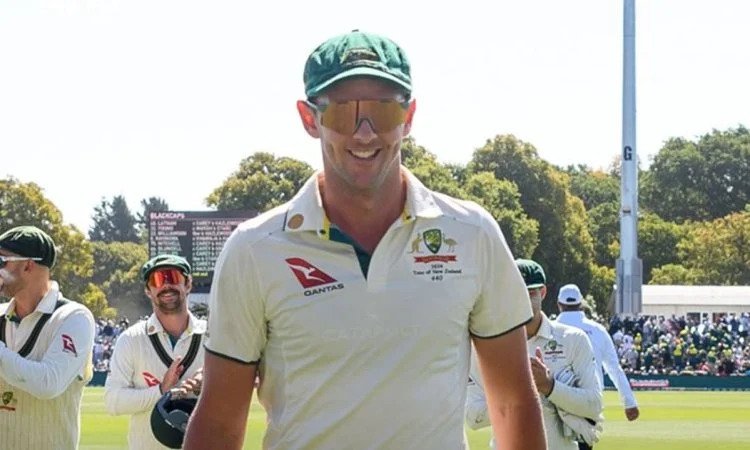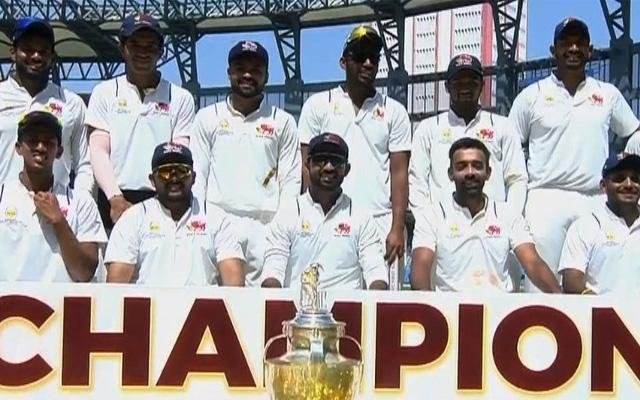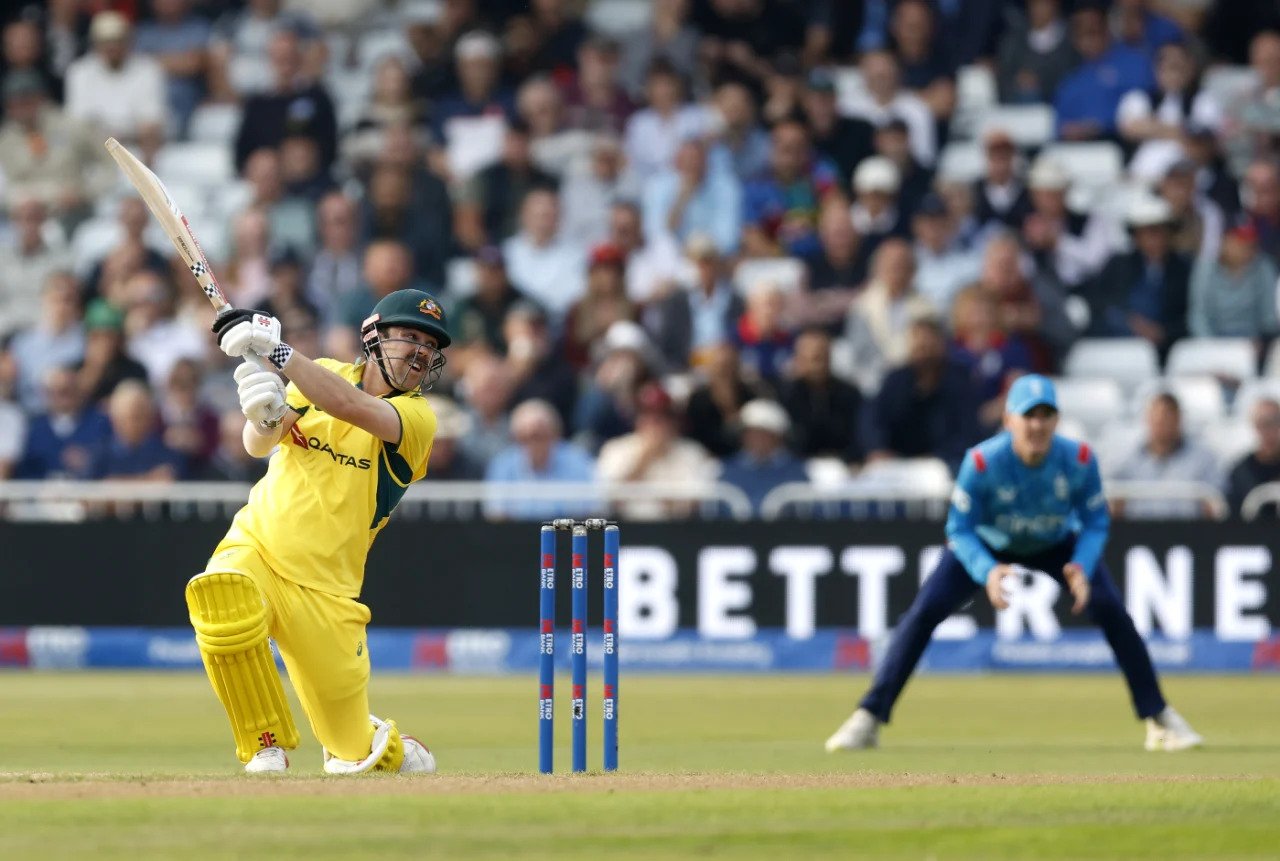Hazlewood’s 5 Wicket Haul Puts Australia in Control: Henry Provides New Zealand Partial Hope
In the second Test at Hagley Oval, On the first day of the second Test at Hagley Oval, Mitchell Starc accomplished a historic feat by surpassing Dennis Lillee’s record with his 356th Test wicket. Josh Hazlewood also had an outstanding performance before Matt Henry spearheaded a late-inning comeback for New Zealand.
Australia‘s top order came under strain once more, but Marnus Labuschagne broke through with a string of poor scores.

Australia is now trailing New Zealand 162 (Latham 38, Hazlewood 5-31, Starc 3-59) by 38 runs with 124 for 4 (Labuschagne 45*, Lyon 1*).
Australia reached stumps at 124 for 4, down by 38 runs, after New Zealand was dismissed for their lowest total in Christchurch. Henry grabbed the wickets of Usman Khawaja, Cameron Green, and Travis Head.
In his 50th Test match, Marnus Labuschagne overcame a lull in form to achieve a solid 45 not out, giving Australia the advantage they need to secure a 2-0 series victory after their commanding triumph in Wellington. Nathan Lyon, the nightwatcher, made it through the final scene of the play.
However, Henry’s late efforts managed to keep New Zealand afloat. After seeing Hazlewood dominate with flawless line and length bowling in his five-wicket haul, Henry answered with a frightening swing and well-thought-out strategies, capped off with a magnificent delivery to breach first Test centurion Green’s defenses.
Ben Sears, making his Test cricket debut, ignited the game for New Zealand when he bowled Steven Smith leg before wicket on his third ball. Sears had entered the attack in the ninth over as the first substitute bowler. Smith was hit on the pads due to a complete miscalculation. His dismay was evident when he attempted to appeal the call, but the umpire’s call upheld the result.
Also Read: Tim Southee Acknowledges Challenge Amidst 100th Test Milestone
Even though Head was dismissed for a reckless shot just before stumps, Australia controlled the remainder of the day’s play thanks to an eight-wicket partnership between Hazlewood and Starc, which caused New Zealand to surrender for the third consecutive innings below 200 runs.
Conditions did not look as hazardous as in Wellington, but Pat Cummins’ choice to bowl first was rewarded on a green-tinged surface that suggested seam movement.
Tea bowled New Zealand out for 162 after using six bowlers. New Zealand’s batting display was atrocious; at one point, they lost 8 for 60 in a terrible opening to a crucial match that featured the 100-Test milestones for Tim Southee and Kane Williamson.
After Tom Latham and Will Young blocked the new ball in a 47-run opening partnership, New Zealand gave up a good start.
Despite having only amassed 202 runs at a rate of 16.83 in his previous 12 Test innings, Latham was confident and played with ease, in contrast to Young, who struggled mightily against Hazlewood and Cummins.

In the twelfth over, Cummins, having just claimed ten wickets on the spin-friendly Basin Reserve pitch, went back to Lyon. However, at Hagley Oval, spin has never been advantageous; Lyon’s onslaught was the first time a spinner had ever entered the ground early.
Lyon bowled just two overs during the game, and Latham made a big impression by swiping the opening ball to the boundary.
Before Starc reappeared, Australia had to endure a wicket-less first session. In the 19th over, Mitchell Marsh completed a difficult low catch at third slip, which brought about the collapse of New Zealand and ended Young’s tumultuous innings.
Australia had elected to bowl first in Test matches for the 29th time since 1998, but they had only taken longer to get a wicket twice.
By lunchtime, Australia had taken command when Hazlewood dismissed Latham and Rachin Ravindra, who had attempted a wild drive and edged to slip. After the interval, New Zealand took a deeper tumble, and Ravindra threw back his head and trudged off in disgust.
Daryl Mitchell was again unable to play aggressively due to New Zealand’s familial situation, and he was caught behind by another exquisite pass from Hazlewood.
After receiving a standing ovation upon his arrival, Williamson was resolved to atone for his horrifying first Test match failure, which was a rare double-failure. He took advantage of a few rare loose deliveries from Cummins before Williamson looked on helplessly as a Hazlewood delivery angled back and trapped him leg before wicket on 17.

Compared to Hazlewood, Starc was inconsistent and costly until he removed Glenn Phillips by catching him behind the leg side, moving him up to fourth place on Australia’s all-time wicket-taking list, surpassing Lillee’s record.
With New Zealand’s long-standing problems against Australia continuing, Starc was on a roll when he had Scott Kuggeleijn leg before wicket with his first ball after hitting him with a classic yorker that struck him on the foot.
With just two Test match victories over Australia since 1993, New Zealand stuck to a seam-heavy assault, with Sears taking the place of the injured quick Will O’Rourke. Mitchell Santner, a left-arm spinner, was again passed over.
For the fourth consecutive Test match, Australia fielded an unchanged team, and for the seventh straight game, they used the same quartet of bowlers.
Before the game, the players presented a guard of honor to retiring umpire Marais Erasmus.




